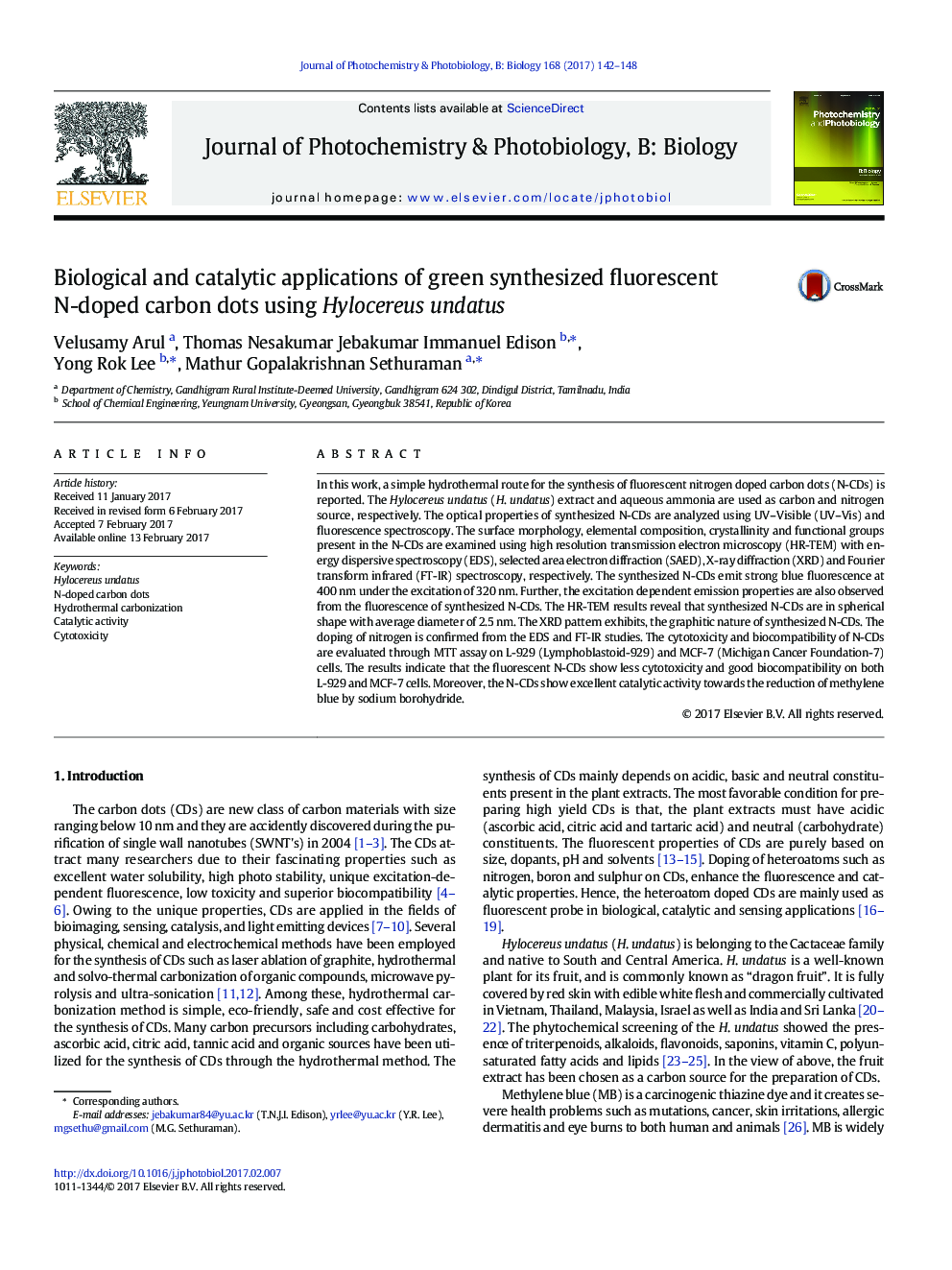| Article ID | Journal | Published Year | Pages | File Type |
|---|---|---|---|---|
| 4754542 | Journal of Photochemistry and Photobiology B: Biology | 2017 | 7 Pages |
â¢The highly fluorescent N-CDs was synthesized from H. undatus extract.â¢The simple hydrothermal carbonization method was employed for the synthesis of N-CDs.â¢The hydrothermal carbonization method is cost effective, safe route and eco-friendly.â¢The synthesized N-CDs used as an excellent catalyst for the dye reduction.â¢The N-CDs, exhibits excellent cytotoxicity on L-929 and MCF-7 cells.
In this work, a simple hydrothermal route for the synthesis of fluorescent nitrogen doped carbon dots (N-CDs) is reported. The Hylocereus undatus (H. undatus) extract and aqueous ammonia are used as carbon and nitrogen source, respectively. The optical properties of synthesized N-CDs are analyzed using UV-Visible (UV-Vis) and fluorescence spectroscopy. The surface morphology, elemental composition, crystallinity and functional groups present in the N-CDs are examined using high resolution transmission electron microscopy (HR-TEM) with energy dispersive spectroscopy (EDS), selected area electron diffraction (SAED), X-ray diffraction (XRD) and Fourier transform infrared (FT-IR) spectroscopy, respectively. The synthesized N-CDs emit strong blue fluorescence at 400Â nm under the excitation of 320Â nm. Further, the excitation dependent emission properties are also observed from the fluorescence of synthesized N-CDs. The HR-TEM results reveal that synthesized N-CDs are in spherical shape with average diameter of 2.5Â nm. The XRD pattern exhibits, the graphitic nature of synthesized N-CDs. The doping of nitrogen is confirmed from the EDS and FT-IR studies. The cytotoxicity and biocompatibility of N-CDs are evaluated through MTT assay on L-929 (Lymphoblastoid-929) and MCF-7 (Michigan Cancer Foundation-7) cells. The results indicate that the fluorescent N-CDs show less cytotoxicity and good biocompatibility on both L-929 and MCF-7 cells. Moreover, the N-CDs show excellent catalytic activity towards the reduction of methylene blue by sodium borohydride.
Graphical AbstractDownload high-res image (268KB)Download full-size image
